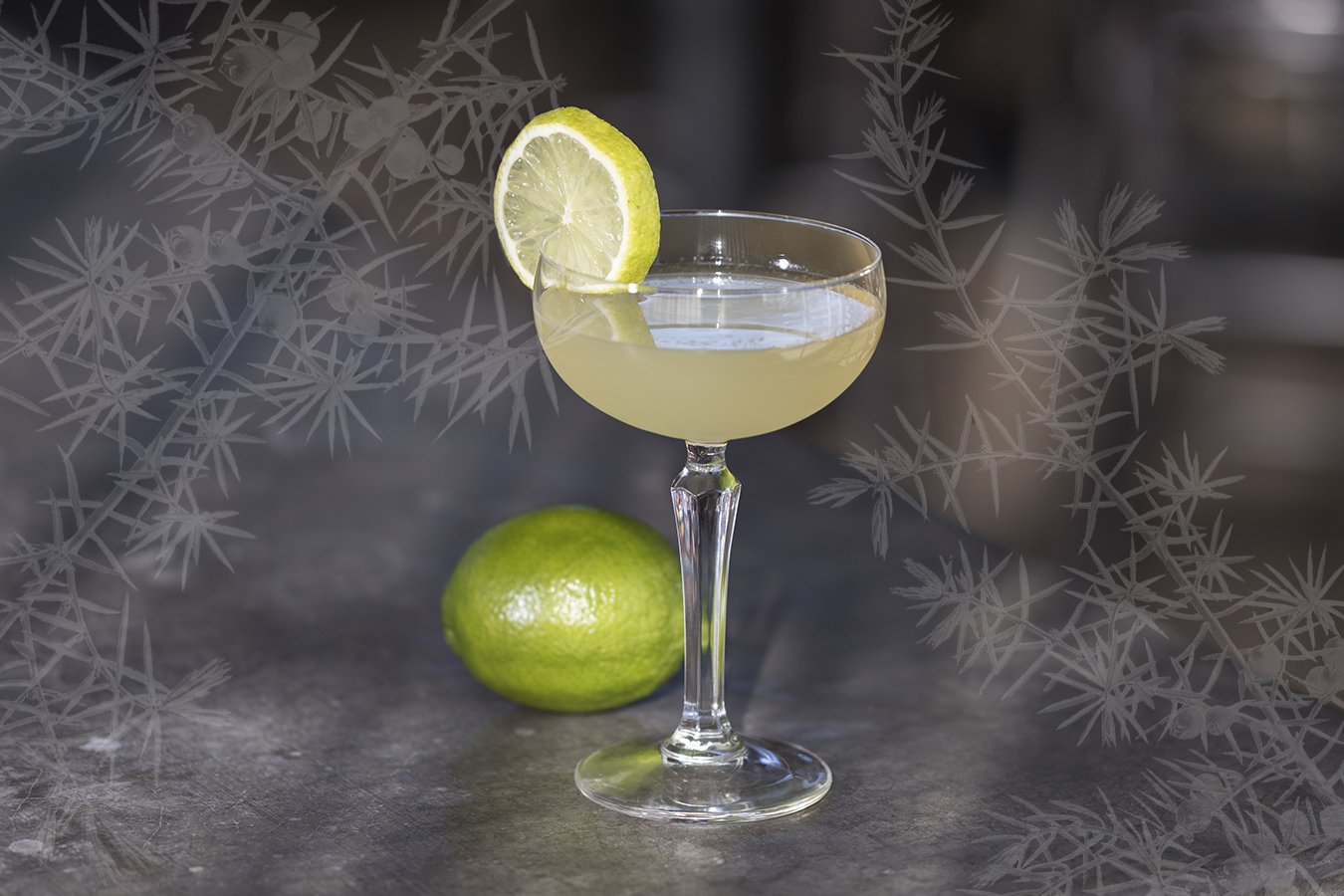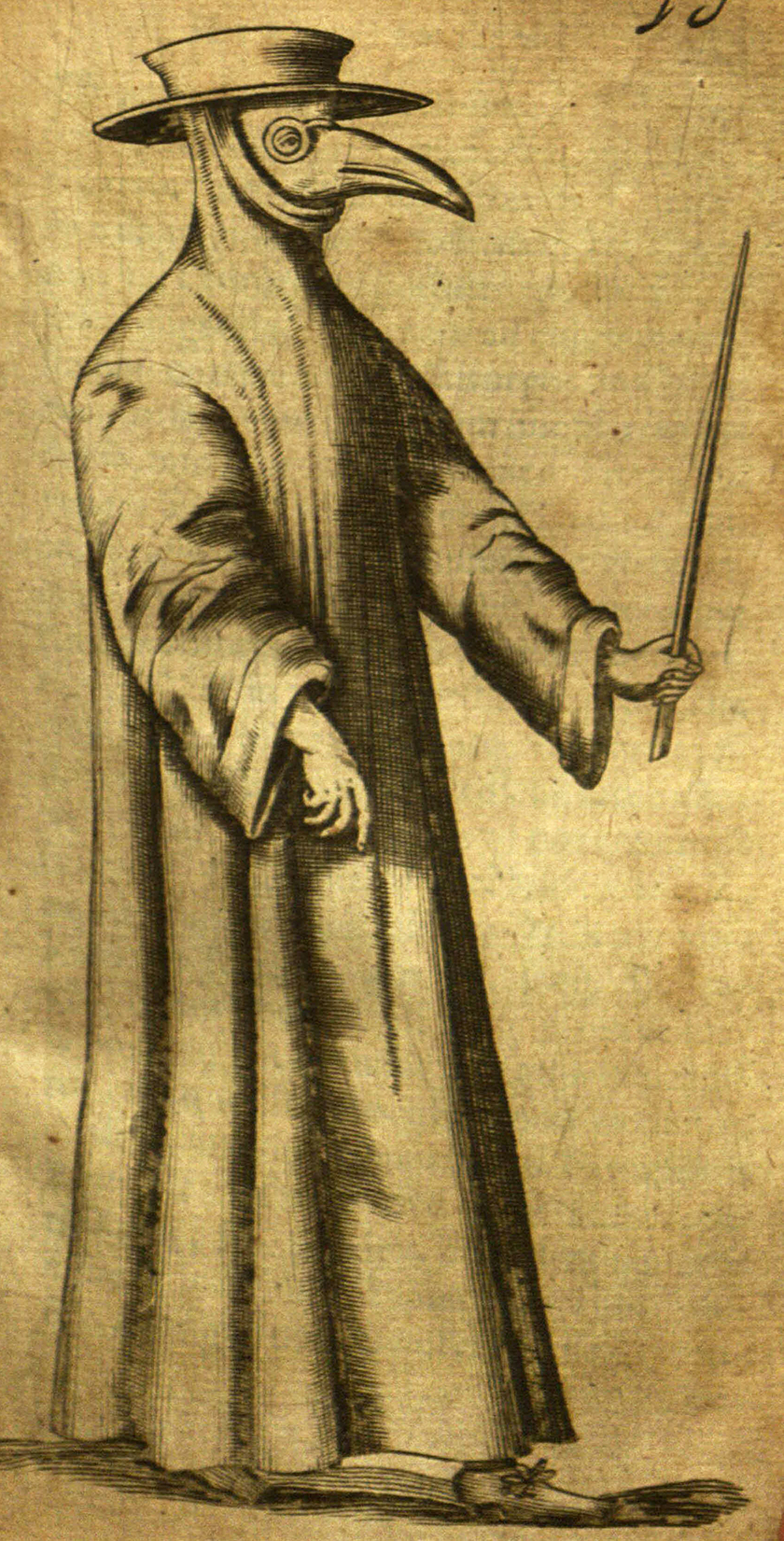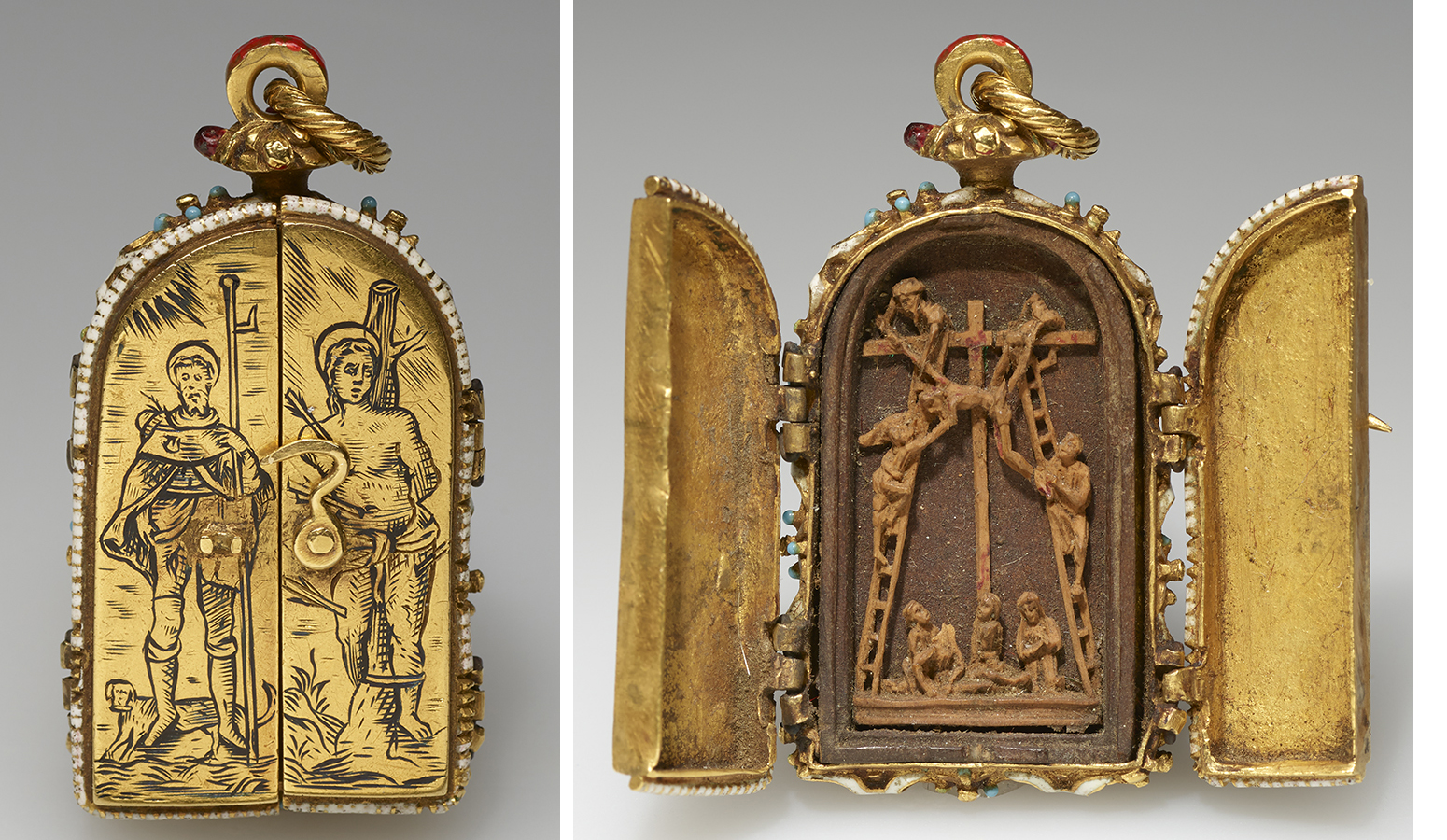
Plague Water
‘A Singular Remedy Against Pestilence’
The story behind the Plague Party, our modern cocktail, draws on two recipes for early remedies against severe illness: Plague Water, used to treat or prevent black plague, and Aqua Mirabilis, used as a miraculous cure for just about anything. By recreating these medicines and turning them into a cocktail, we explored the ways in which many modern spirits had their origins as medical treatments.

WHL
Plague Water was one among a slew of medicines used by people in hopes of avoiding a grisly death from bubonic plague. Although many medicines in the 1700s were relatively effective, having come from centuries of trial, error, and empirical practice of herbal healers, the modern understanding of bacteria and vector-based diseases was not part of early modern medical theory. Nevertheless, this did not necessarily render their medicines ineffective. Herbal medicines can be potent cures against many illnesses, and some cures continue to be researched today for their antibacterial properties. 1 The recipe for Plague Water from The London Distiller is full of ingredients once thought to mitigate this feared illness. Angelica roots, for example, “is a singular remedy against pestilence and poyson.” 2 Contra Yerva was considered to be “binding and stops blood,” 3 and zedoary could “resist poyson.” 4
For centuries, black death, or black plague (now generally believed to be caused by the flea-carried bacterium Yersinia pestis) decimated European populations.5 During a series of epidemics in the 1300s, an estimated 25 million people died, with population levels only returning to their pre-black death levels 150 years later.

This pendant may have been used to protect the wearer from plague.
View in the Collection (Click here to zoom.) Gift of Tony, Lois and Ruth Blumka in memory of Victoria Blumka, Minneapolis Institute of Art
Black death has emerged throughout the world at various points in history, including in San Francisco in the early twentieth century, and in southern India in 1994.6 Bubonic plague continues to be endemic today in the rodent population of the Rocky Mountains. According to the Centers for Disease Control and Prevention, around seven people per year contract the disease in the United States.7
Alongside the Plague Water, Tattersall also recreated Aqua Mirabilis, which translates to Miraculous or Wonderful Water. The recipe specifically mentions that it can be used to cure palsy (paralysis or tremors), but it mentions that it is also very restorative. In addition to curing specific illnesses or symptoms, people in the 1700s also looked to everyday remedies to help maintain their health. By taking small amounts of medicines like Aqua Mirabilis daily in small quantities, like many take vitamins today, early modern individuals hoped that they would be able to stay generally healthy.
Tattersall fashioned these two medicines into an historically inspired cocktail because both of these herbal-forward spirits are reminiscent of modern spirits such as Green Chartreuse and Becherovka. During the early modern period, however, they would have likely been taken in small amounts on their own, or in a warm posset drink. In the 1700s, recipes flourished for possets and for medicinal waters, like plague water, to be taken in a posset, an ancestor of modern-day eggnog typically composed of warm wine or beer mixed with milk, to which medicines could be added. Later posset recipes show the addition of eggs and sugar, perhaps spurring the drink’s movement from medicinal into social realms.

View in the Collection (Click here to zoom.) Gift of Mr. and Mrs. George R. Steiner, Minneapolis Institute of Art
Many early posset recipes reveal their role in helping women recover from childbirth. One recipe in a 1680 manuscript specifically refers to these patients and includes the name of the midwife who provided the recipe to the author: “A good Posset drink for a Woman [that] lies in. A quart of Milk put into it half a pint of water & when it boyles put in half a pint of white wine & run it through it through [sic] a sive on a handfull of Sage & cover it down. Mrs. Harris Midwife.”8
PLAGUE WATER: Historic Recipe Transcription 9
“Plague Water. The Greater Quantity.
Take strong Proof-spirit what sufficeth, Butter-bur-roots dry 1 pound, Garden Valerian rots dry, common Valerian roots dry, Angelica roots, Imperatoria, Gentian, Enula Campana [elecampane], Snake-grass roots, of each six ounces, Contra Yerva [Shepherd’s Purse], Zedoary [white tumeric], Galingale, of each 4 ounces, Rue leaves dry, White Horehound, Scordium, Carduus Benedictus [Blessed Thistle], of each 5 ounces, Elderflowerse, Lavender, Mace of each 3 ounces, Citron pils dry, Juniper berries, of each 8 ounces, Green Walnuts with the husks 1 pound, Venus Triacle, Mithridate, of each 2 ounces, Anniseeds best a pound and half, Camphire 1 ounce; distil them into strong Proof-spirit according to the art, dulcifie with white Sugar 10 pounds; for use; let the party infected take of this water 1 ounce, mingled with warm Posset drink, (or any proper water in that case) and be kept very warm and sweat well thereon.”
PLAGUE WATER
Tattersall’s Contemporary Distillation
Tattersall followed this recipe closely; however, a few substitutions and deletions were necessary. The scordium was replaced with hops because the two are closely related. Snake grass is dangerous to humans, so licorice root was used instead, and lovage replaced impertoria. We omitted two significant ingredients: Venice treacle and mithridate. Both were extraordinarily complex and expensive medicines once produced by pharmacists across Europe as miraculous cures for all kinds of illnesses, and each had 50 to 70 distinct ingredients, including opium, viper’s flesh, and skink bellies. As much as we value authenticity, we agreed to drop them from the re-created recipe.10 Because this is a distilled product, you’ll have to substitute a store-bought alcohol.
Tattersall Cocktail Recipe
• 1 ounce Green Chartreuse (substitute for Plague Water)
• ½ ounce Becherovka (substitute for Aqua Mirabilis)
• ½ ounce pineapple juice
• ¼ ounce honey sage syrup
• ¼ ounce lemon juice
Honey Sage Syrup: In a saucepan, add 1 cup honey, 1 cup water, and 1 tablespoon fresh sage roughly chopped. Cook on medium, stirring until simmering. Reduce heat and simmer 5 minutes. Cool and strain.
Combine Honey Sage Syrup and remaining ingredients with ice. Shake. Strain.
Pour in coupe glass. Garnish with lime wheel.
Notes
- See, for example, Maggie Fox, “Medieval Potion Kills Superbug MRSA Better Than Antibiotic Vancomycin,” NBC News, February 20, 2015. https://nbcnews.to/2DAr59o ↩
- Nicholas Culpeper, Pharmacopoeia Londinensis: or, The London dispensatory further adorned by the studies and collections of the fellows, now living of the said colledg (London: Peter Cole, 1659): 1. ↩
- Culpeper, Pharmacopoeia Londinensis, 21. ↩
- Culpeper, Pharmacopoeia Londinensis, 13. ↩
- See, for example, Haensch S, Bianucci R, Signoli M, Rajerison M, Schultz M, Kacki S, et al. “Distinct Clones of Yersinia pestis Caused the Black Death,” PLoS Pathog 6 (10), 2010: e1001134. https://doi.org/10.1371/journal.ppat.1001134 ↩
- On San Francisco, see: Guenter B. Risse. Plague, Fear, and Politics in San Francisco’s Chinatown. Baltimore, Maryland, Johns Hopkins University Press, 2012. ↩
- “Your Safety,” Rocky Mountain National Park, Colorado. National Park Service. Last Updated: December 1, 2015. https://www.nps.gov/romo/planyourvisit/safety.htm; “Plague: Frequently Asked Questions,” Centers for Disease Control and Prevention, Last Updated: September 14, 2015. https://www.cdc.gov/plague/faq/index.html ↩
- Mary Andrews, English Medicinal Receipts, manuscript c. 1680. 3. Wangensteen Historical Library of Biology and Medicine, Minneapolis, MN. ↩
- The London-Distiller. London: Printed by E. Cotes, for Thomas Williams, 1667. P. 19. Courtesy of the Wangensteen Historical Library of Biology and Medicine. ↩
- Culpeper listed 52 ingredients in their recipe for mithridate and 70 ingredients in his recipe for Venice Treacle, Culpeper. Pharmacopoeia Londinensis, 241, 243–244. ↩